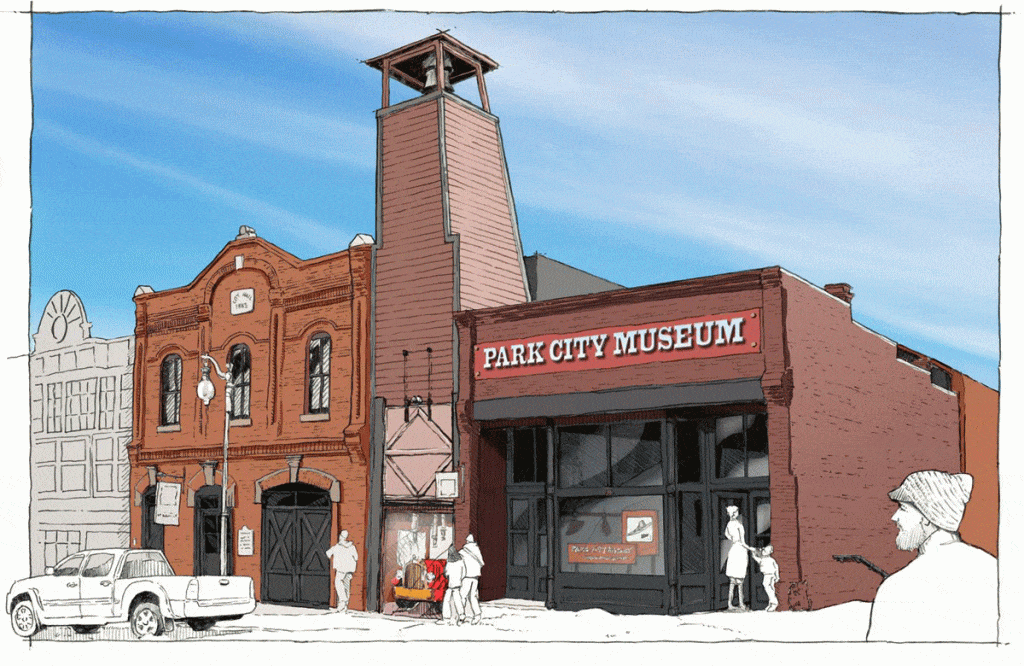
Credit: Park City Museum, West Office Exhibition Design
By the early 1980’s it was clear the transition of Park City from a mining town to a ski town was nearly complete. In 1982, the last operating mine, the Ontario, closed, and miners mourned the end with a last round of beer at the Cozy tavern on lower Main Street, which itself would soon close. And as mining disappeared, so too did much of the evidence of Park City’s mining past.
Abandoned houses on the hillsides above Main Street were collapsing under the weight of snow and the effects of vandalism. A scattering of Main Street business buildings suffered a similar fate. Fires brought an end to others, and still others were bulldozed in the name of progress.
For those who loved the look, feel and sense of community kindled by old Park City, it was time for action to preserve the past before it was too late. An inventory of Park City’s houses and businesses qualified well over a hundred of them for inclusion in the National Register of Historic Places, a National Park Service program to chronicle and save historic structures.
As the city began growing after years of decline, city government moved from its 1885 city hall on Main Street to the newly renovated, vacant Marsac Elementary School just uphill to the east, creating an opportunity for history to survive and thrive on Main Street.
With the 1984 centennial of Park City around the corner, the historic City Hall with its adjoining fire department and bell tower (used for hanging wet fire hoses to dry) was cleared out to house a temporary history exhibit to mark the occasion. The exhibit, hand built by Park City artists like Patricia Smith, Marianne Cone and David Chaplin, among others, proved popular – and so the Park City Museum was born.
As collections and visitation grew through the years, the Park City Museum undertook a nine-million-dollar campaign to expand the old city hall building to 12,000 square feet, allowing for the display of artifacts previously unseen in storage facilities, set to open in 2009. Among the centerpieces of the museum today are the Kimball Brothers stagecoach, the “skier’s subway” in the basement, and a mine cage which lowered miners and equipment down the mine shaft and brought up the ore they dug. Another key attraction is the “mega mine”—a two story cutaway replica of the workings above and underground at the famed Ontario Mine. Each year, more than 135,000 visitors walk in the museum’s front doors, including more than 2,000 students on history field trips.
As the Park City Museum celebrates our tenth anniversary of the opening of the expanded museum, everyone is welcome to the annual membership “Dungeon Party” on Thursday, November 21 at the Museum from 5:30 until 7:30 p.m. This annual membership party is open to members of the Historical Society and anyone interested in joining. Hors d’oeuvres will be provided by Riverhorse Restaurant, with desserts provided by Java Cow, and bartending services provided by Top Shelf.